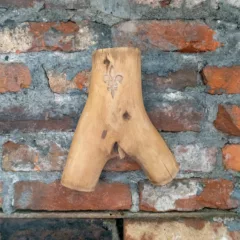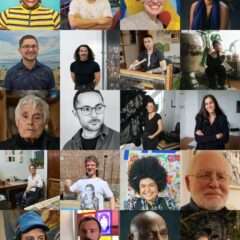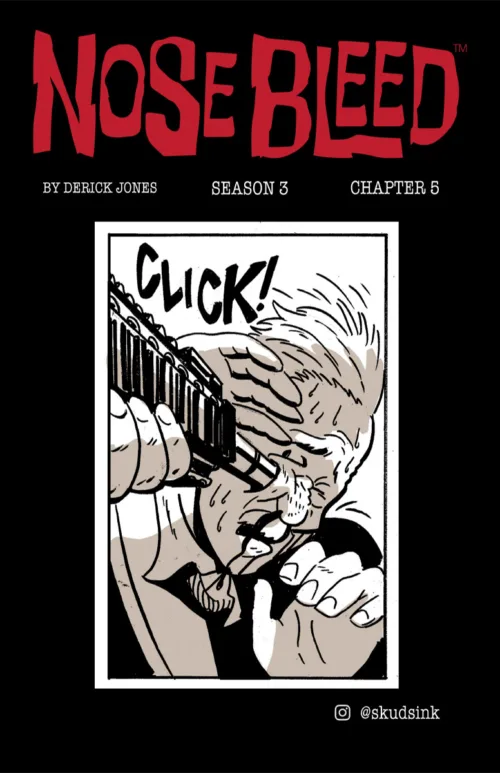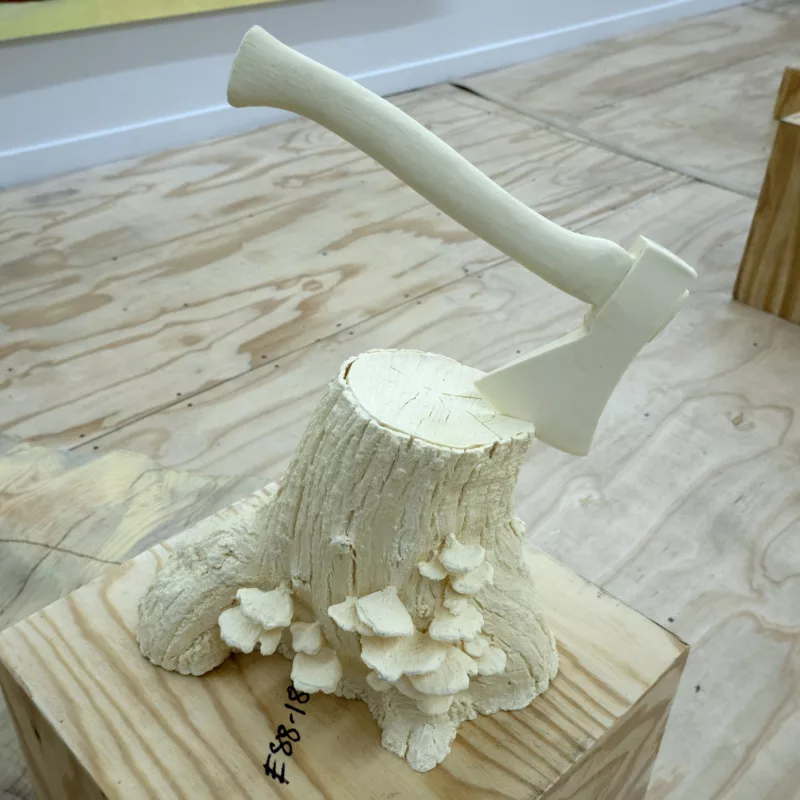
The immediate impact upon first entering Seneca Weintraut’s solo show D_NNER PARTY at Commonweal Gallery is one of color. Yellows ranging from the whitish translucence of cold pasteurized dairy, to the tawny gold of wood grain, the grubby beige of outdated technology, the lemon of sunlight, the pinky apricot of flesh, and the sickly green snot of a bruise’s edge. The work all sits together in these sunny shades, supported by various states of wood; plinths, blankets, frames, and shavings. We are greeted immediately by an axe in a stump that looks as if it was sculpted from butter – all of these factors place us immediately and squarely in the pastiche of American time.
Temporality as a theme is introduced with several frozen moments. A carved wooden picnic blanket stiffly maintains ripples and folds in the fabric. Slices of wooden bread remain fresh from 1848. The advent of the Macintosh computer as a product of individual genius and the repackaging of mass westward colonization as an individual journey of stoic bravery provides a kind of weird mirror. We try calculating the amount of supply we need for this journey into the unknown, but we are unaware of what we will face.
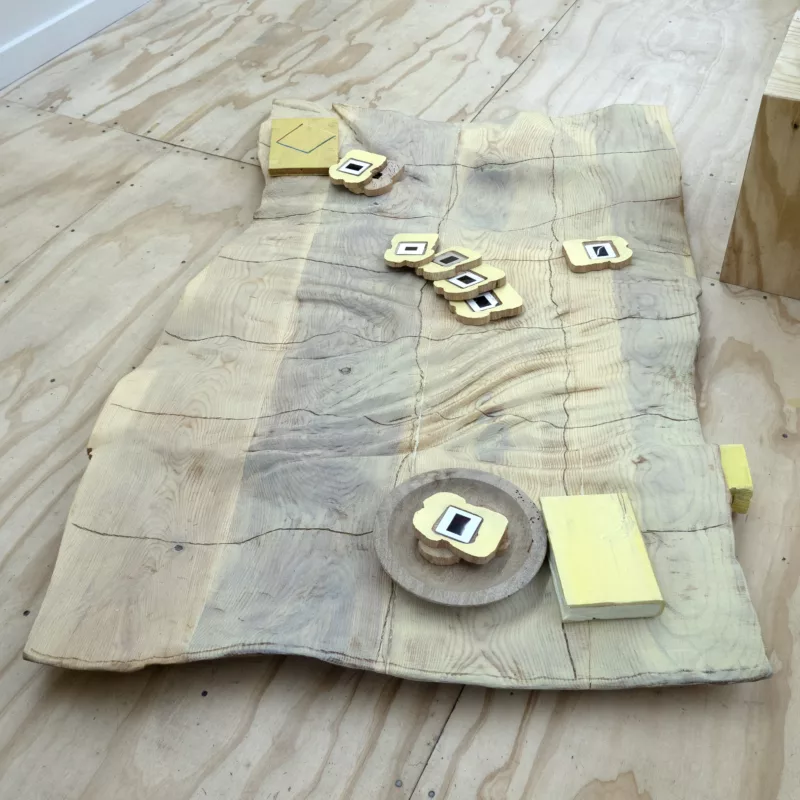
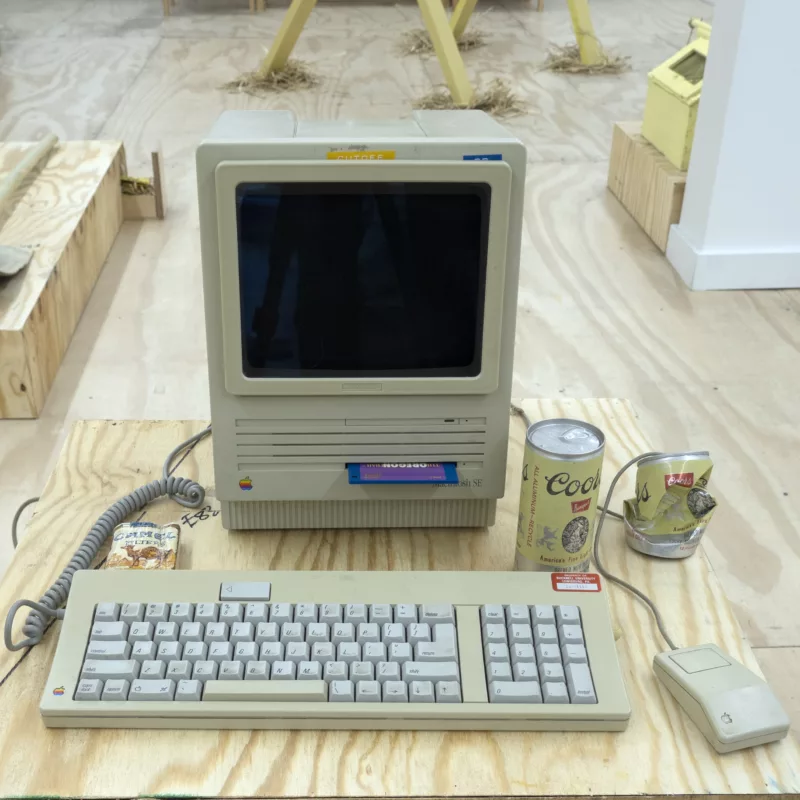
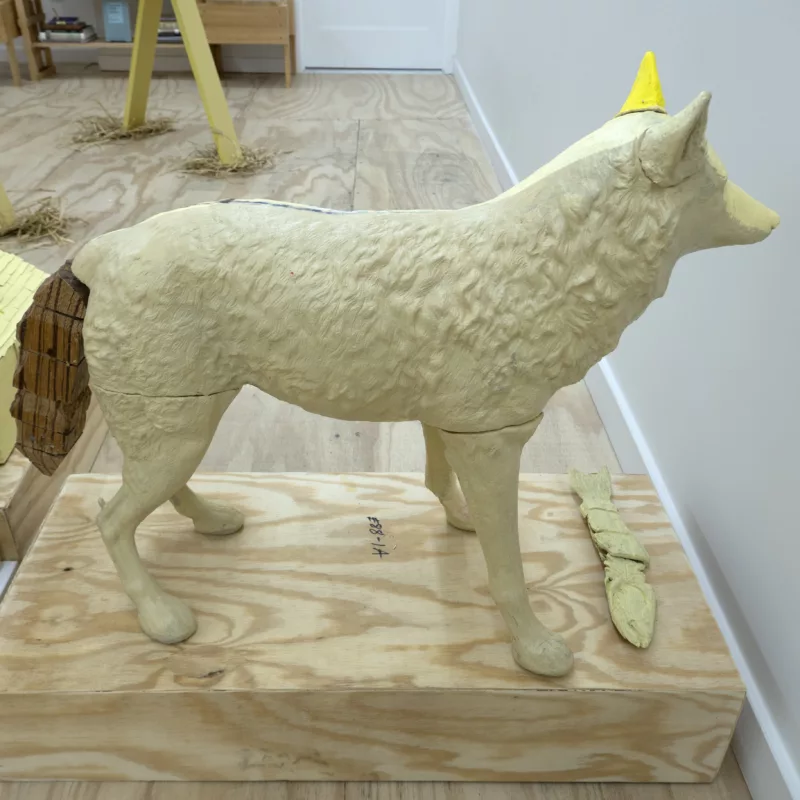
A row of smaller paintings on the wall moves from lighter to darker. A wooden wolf Decoy faces East towards a painting of open legs exposing a pink vulva, titled Origin. The open legs face West. When thinking about Manifest Destiny, a belief in the divine right of white America to expand westward, there becomes a certain directionality of American space-time. East becomes past and West becomes future, the aptly titled Origin is positioned to birth Oregon trailers onto their path.
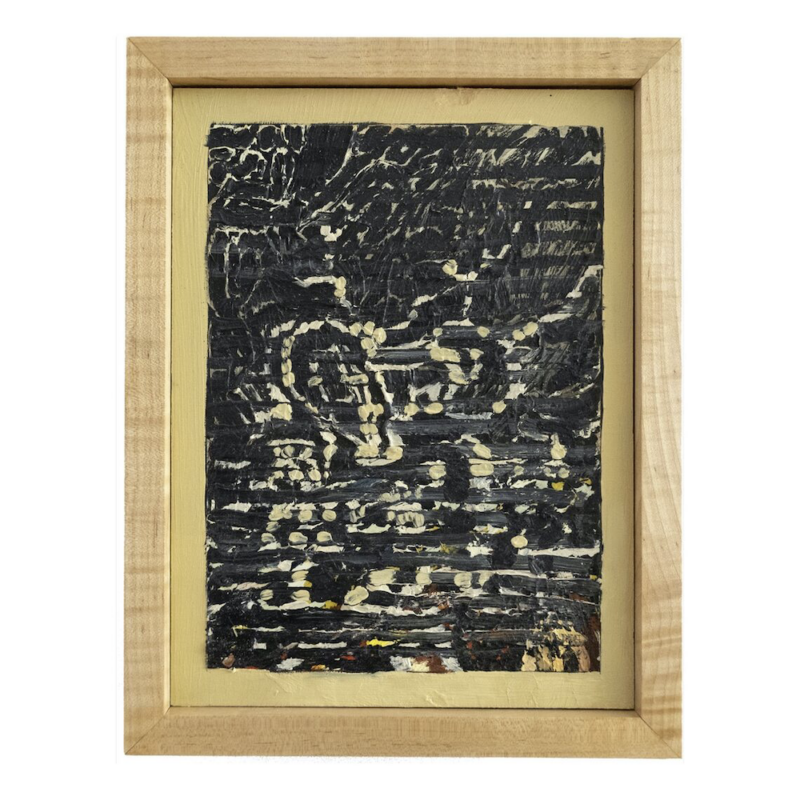
The joke is, at the end of both the Donner Party and the Oregon Trail game – nearly everybody dies. The phrase “going west” can also mean to die. The small paintings seem to trace the journey west, the going dark. Brushwork snail trails over wooden hewn surfaces – like paths on paths. As one moves along the wall of paintings from left to right – things flicker in and out of the candlelight of recognition and into the encroaching night. The night at first illuminates colors previously unrecognized and then, slowly obscures more and more information. Night Vision references the spotty abstraction that comes with eyes adjusting to the dark – the painting has striations that mimic the flickering lines of an old computer screen. The title of the last painting in the sequence is Cut Off which is presumably a reference to the Donner Party being cut off from the mountain trail by impenetrable snow which, in turn, making hungry cannibals out of them.
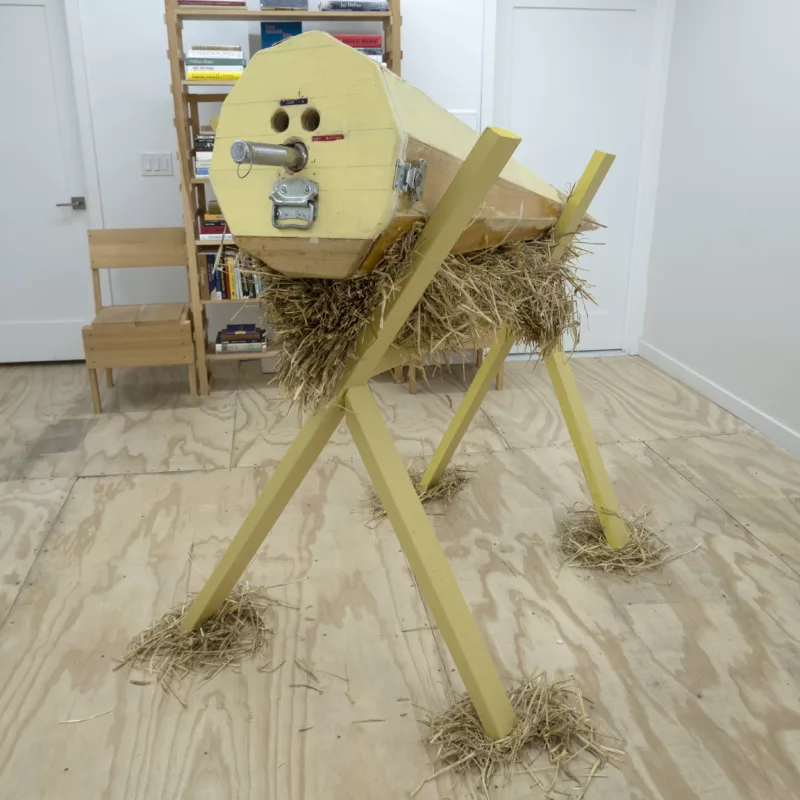
There emerged a growing Rolodex of symbols. The vagina, the slides, the holes, the books, the computer monitor, and the clam as contrasted with the axe, the mouse, the shovel, the flashlight, and the wolf. Windows, wombs, holes. Devices of visual or physical entry and a predator. In _ _NN_R _ART_ (a reference guide made by Weintraut) the artist makes two categories, Clams and Wolves, and states that we are both. Humans are both fierce and discreet, solitary and wily, cunning and calm.
Another piece of technology for looking back was a sculpture called “C.A.S.P.E.R.” Its face is pointed due West – two holes for eyes and a long flashlight handle nose. The eyes are voids meant for you to look into the dark – toggling the futile flashlight button as the tapered shape resists illumination. The viewer looks back East, into its face as an attempt to seek truth, meaning, ghost, god? To look backward into the death of the past and forwards into the death of the future at the same time. I found the object and the concept very compelling, but the actual viewer interface did not create the experience described. There is a Casper the Friendly Ghost cartoon in vinyl on the wall. I found the inclusion of the cartoon didn’t add to the effect of the installation, which may have benefitted from using the blank wall as breathing space. Upon reflection, the yellow sculptures all fight for attention in my mind. Each with a certain richness, yet each puts forward the same thesis.
I thought it was interesting that the artist when depicting the fictive creation of American identity and westward expansion chose not to include the obvious violence of genocide, displacement, and enslavement which carves out the shifting boundaries of the American landscape and identity. Westward expansion would not exist without federal acts to remove indigenous people. In fact, two indigenous guides were killed to feed the survivors of the Donner Party. Instead, Weintraut chose to focus on a certain collapsing carnivorousness of white American time.
In an upside-down table, slices of bread are suspended facing a bone and a finger. Which place setting is more desirable? Is it better to be the eater or the eaten? The past or the future? Knowing both of you must die. Forward, backward, east west, the ouroboros of USA space-time is a frothing wolf chasing and gnawing on its own tale.


